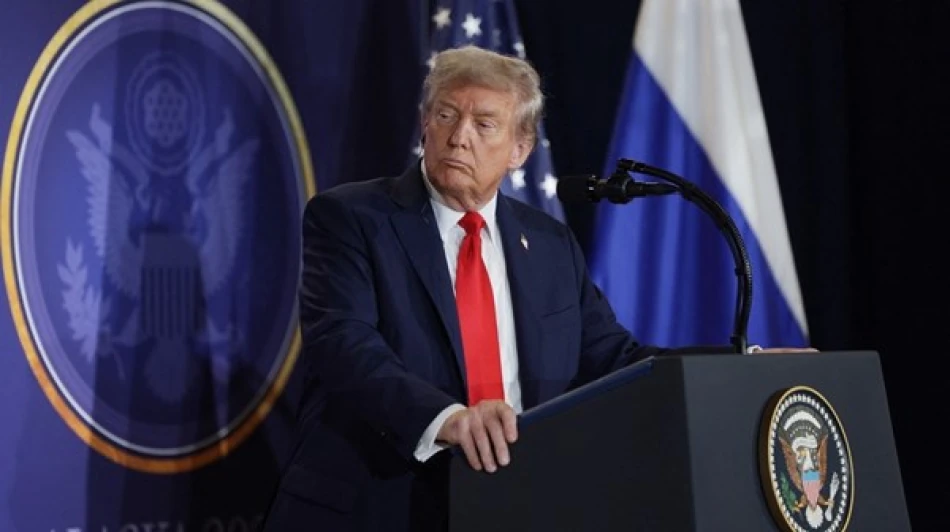
Trump Unveils Potential Solution to End Ukraine Conflict
Trump Pushes for Comprehensive Peace Treaty Over Ceasefire to End Ukraine War
President Donald Trump declared Saturday that achieving lasting peace in Ukraine requires pursuing a comprehensive peace treaty rather than settling for a temporary ceasefire agreement. The statement signals a potential shift in U.S. diplomatic strategy toward ending the nearly three-year conflict between Russia and Ukraine.
Beyond Band-Aid Solutions
Trump's emphasis on a formal peace treaty over a ceasefire reflects lessons learned from previous conflicts where temporary truces often collapsed into renewed violence. Unlike ceasefires, which typically freeze military positions without addressing underlying disputes, peace treaties establish legal frameworks for long-term stability and define post-conflict relationships between nations.
Historical precedents support this approach. The 1953 Korean Armistice created a ceasefire that technically remains in effect today, leaving the peninsula divided and tensions unresolved. Conversely, comprehensive peace agreements like the Camp David Accords between Egypt and Israel in 1978 created lasting diplomatic relationships.
Strategic Implications for Global Markets
A genuine peace treaty would likely trigger significant market reactions across multiple sectors. Energy markets, which have experienced volatility due to sanctions on Russian oil and gas, could see stabilization if trade relationships normalize. European natural gas prices, in particular, remain elevated due to supply disruptions that began in 2022.
Defense contractors who have benefited from increased military spending and weapons transfers to Ukraine might face different dynamics under a peace scenario. Conversely, reconstruction efforts in Ukraine could create opportunities in infrastructure, technology, and manufacturing sectors.
Diplomatic Complexity Ahead
Negotiating a comprehensive peace treaty presents formidable challenges that explain why many conflicts settle for ceasefires first. Key issues would include territorial disputes over Crimea and eastern Ukrainian regions, security guarantees for Ukraine, sanctions relief for Russia, and war crimes accountability.
The approach also requires buy-in from European allies who have invested heavily in supporting Ukraine. NATO members have provided over $100 billion in military and humanitarian aid, creating stakeholders beyond the primary combatants who would need to participate in any lasting agreement.
Learning from Recent Peace Processes
Trump's preference for comprehensive agreements aligns with successful recent diplomatic initiatives. The Abraham Accords, which normalized relations between Israel and several Arab nations during his previous presidency, went beyond simple non-aggression pacts to establish trade, tourism, and technological cooperation frameworks.
However, the Ukraine situation involves nuclear powers and affects global energy and food security, making it significantly more complex than Middle Eastern normalization agreements. The involvement of NATO Article 5 considerations and European security architecture adds layers of complexity absent from previous Trump administration diplomatic successes.
Whether this approach can gain traction will depend largely on the willingness of both Moscow and Kyiv to engage in substantive negotiations, as well as the ability of international mediators to craft agreements that address core security concerns of all parties involved.
 Layla Al Mansoori
Layla Al Mansoori







